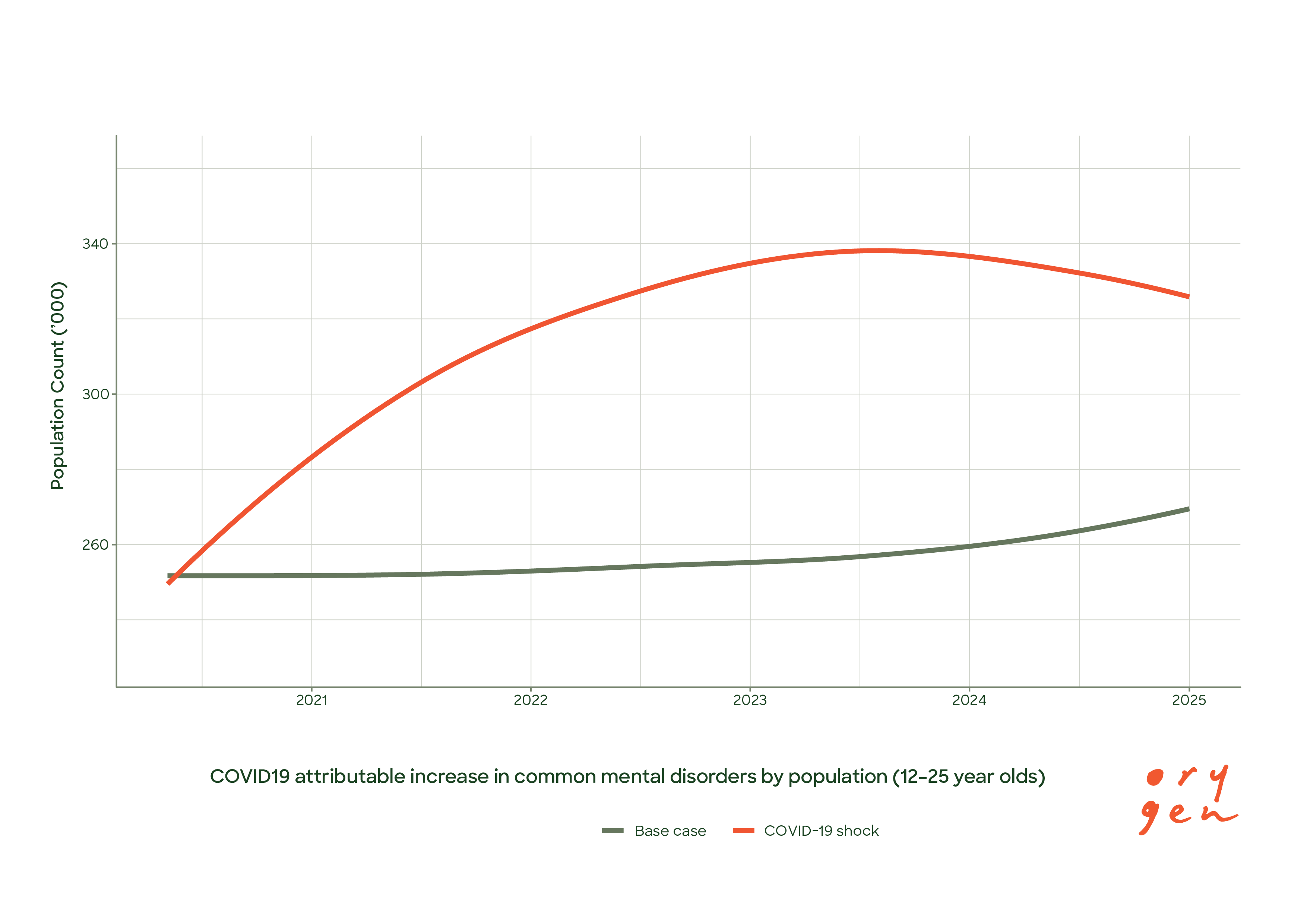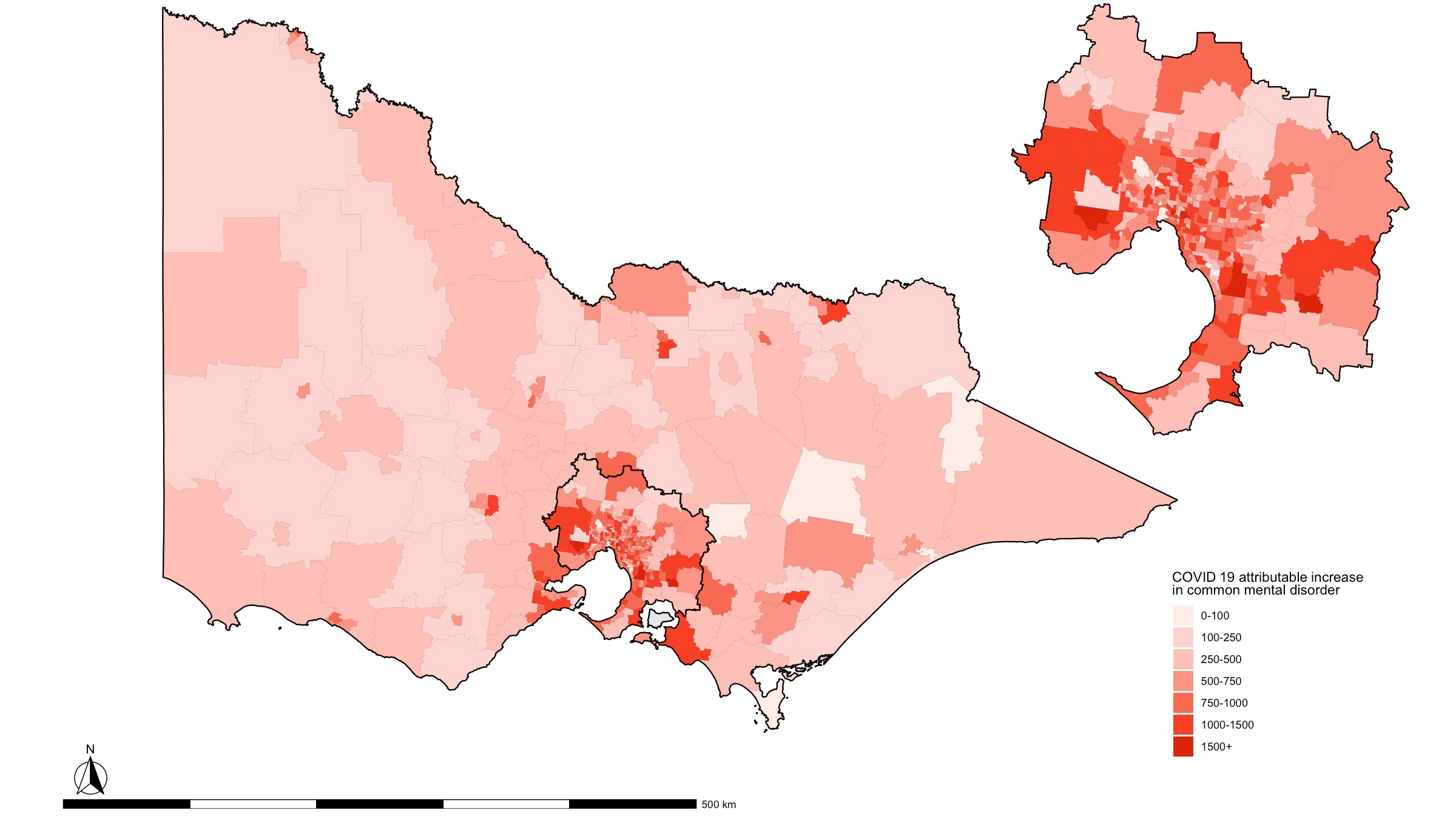
An additional 82,000 young Victorians could experience mental health disorders as a result of the COVID-19 pandemic than would have been expected had the pandemic not occurred, new modelling by Orygen has shown.
The modelling looked at Victorians aged 4 – 84 years, and the 12-25 year old age group specifically, to better understand and predict the future scale of the mental health impacts resulting from the COVID-19 pandemic.
 COVID19 attributable increase in common mental disorders by population (12-25 year olds)
COVID19 attributable increase in common mental disorders by population (12-25 year olds)
The executive director of Orygen, Professor Patrick McGorry, said the modelling showed a concerning ‘second wave’ of health impacts of the COVID-19 virus was on its way that would significantly impact the mental health of Victorians. “This modelling shows us that a second wave is coming and that we must be prepared for it,” Professor McGorry said.
It was projected that an additional 370,000 Victorians aged 4-84 (including the 82,000 aged 12-25) could be experiencing mental health disorders when the COVID-19 mental health curve peaked in mid-2023, he said.
 COVID-19-attributable increase in common mental disorders in 2025 by SA2 areas (4-84 year olds)
COVID-19-attributable increase in common mental disorders in 2025 by SA2 areas (4-84 year olds)
Professor McGorry said it was worrying that the number of people experiencing mental illness and mental ill-health presenting to mental health services for care and treatment had declined substantially during the pandemic.
“Although some of these people will have taken up telehealth and/or other online options during this period, we are concerned for the significant number who have not been accessing any form of care,” Professor McGorry said.
He said as restrictions on people’s movements eased, the health care system must be equipped with the capacity to respond to the expected influx in demand for services.
The demand would be driven by an increased number of people experiencing poor mental health as a result of physical distancing; those re-presenting to services in a heightened state of distress resulting from a discontinuation of treatment; or from those with severe mental ill-health who have been triggered by their experience of the pandemic, he said.
“In the longer term, educational disruption and disengagement, loss of employment, financial stress, housing stress and reduced wellbeing will have a significant impact on the mental health of the population,” Professor McGorry said.
“It is well documented that these social and economic factors increase the risk of mental illness and suicide in our community.
“Young people will be disproportionately impacted by the COVID-19 pandemic, particularly in the coming months and years,” he said. “They make up a large proportion of the casual workforce, particularly in retail and hospitality, sectors that have been hardest hit by the virus.
“In readiness for this predicted ‘second wave’, we must ensure we have a robust system of care in place across the state to effectively respond to the mental health needs of Victorians.
“If we are to do this successfully, continued effective modelling, plus ongoing data monitoring and research must also be factored in as part of the mental health response plan from this stage forward,” Professor McGorry said.
Note: The modelling does not consider Victorian and Australian government policy responses and interventions to COVID-19 to date that have aimed to mitigate social, economic and health impacts of the pandemic.